Second-Order Driveline Vibration Theory
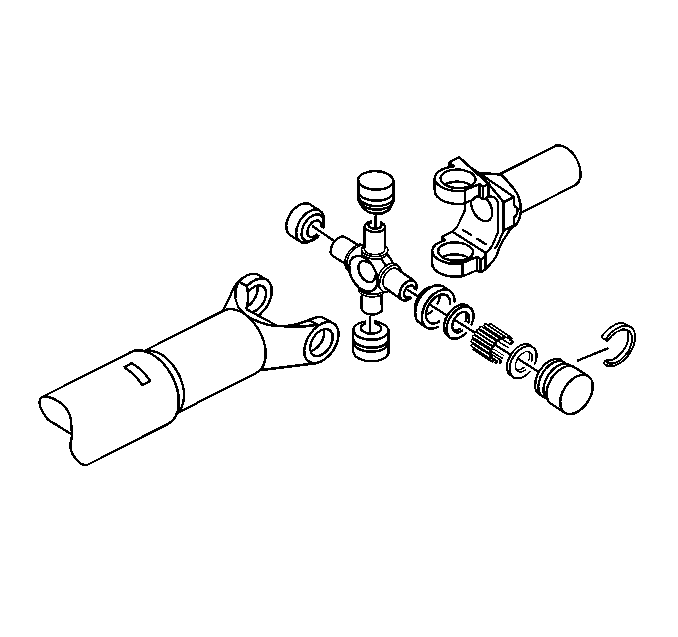
A faulty universal joint
(U-joint) may cause a vibration that occurs twice for each rotation of the
propeller shaft. This type of vibration is called a second-order vibration.
Second-order driveline vibrations are independent of runout or balance
of a driveline component.
The following description of basic U-joint theory will help you to understand
where second-order driveline vibrations originate and why they occur.
| • | As the propeller shaft rotates, the U-Joint speed up and slow
down twice for each rotation of the propeller shaft. |
| • | The acceleration and deceleration of the U-Joint is not visible.
If there is vibration in the U-Joint, the acceleration and deceleration will
be audible and tactile. |
| • | Compare the U-joint in a vehicle to a universal-type socket. When
a universal-type socket is used to tighten a bolt, the socket will bind and
release as the socket turns toward 90 degrees. The bind and release
occurs twice for each revolution of the socket. |
| • | The U-joint in a vehicle works in the same way as the universal-type
socket. The bind and release effect is directly proportional to the angle
that the U-joint operates: the greater the angle, the greater the effect. |
| • | Because the transmission output speed is constant, the binding
and releasing of the U-Joint is better described as an acceleration and deceleration
which occurs twice for each revolution of the propeller shaft. |
| • | If the propeller shaft is running slowly, the accelerating and
decelerating effect is visible. The acceleration and deceleration may create
a vibration due to the fluctuations in force that are generated at high
speeds. |
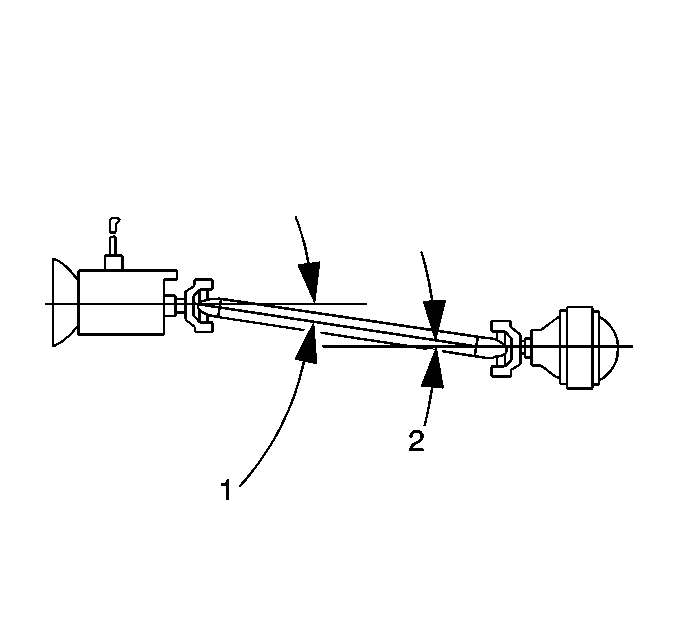
A vehicle that has a single rear axle has two working angles. A front
working angle (1) and a rear working angle (2).

A vehicle that has two rear axles (tandem) has four working angles.
A front working angle (1) on the first propeller shaft and a rear working
angle (2). There is also a front working angle (3) on the second propeller
shaft and a rear working angle (4).
Engineers design drivelines in order to compensate for the accelerations
and decelerations in order to produce a smooth, constant flow of power, as
listed below:
| • | The transmission drives the front yoke of the propeller shaft
at a smooth and constant speed. |
| • | The first U-joint causes the power to fluctuate twice for each
revolution of the propeller shaft. |
| • | The second U-joint, oriented 90 degrees from the first
U-joint, causes the power to fluctuate opposite that of the first U-joint. |
| • | As the first U-joint slows down, the second U-joint speeds up. |
This design causes 1 U-joint to cancel out the effect of the
other U-joint. The cancelled effects result in a smooth, constant power flow
from the output yoke of the propeller shaft.
Second-order driveline vibrations occur when the cancellation becomes
unequal between the front U-joint and the rear U-Joint.
The main objective of this section is to correct the conditions that
interfere with the proper cancellation effect of the U-Joint. The most common
condition, especially where the launch shudder is concerned, is incorrect
driveline working angles. Other factors may aggravate the condition.
Address the following factors before you attempt to measure or correct
the driveline working angles:
| • | Worn, failed, damaged or improperly installed U-Joint |
| • | Worn, collapsed, or improper powertrain mounts |
| • | Incorrect vehicle trim height adjustment for the front suspension
which aggravates the launch shudder |
| • | Incorrect trim height adjustment for the rear suspension |
| • | Trim height inspection includes trim heights that are too low
or too high. The following vehicles fit into this category: |
| • | Vehicles constantly loaded with cargo |
On rear drive vehicles, the pinion nose tilts upward as you lower the
rear trim height.
If a second-order driveline vibration exists after you correct these
conditions, measure and correct the driveline angles.
If the concern is present only with cargo in the vehicle, perform the
measurements with the vehicle fully loaded. Once you correct a second-order
driveline vibration with the vehicle loaded, the vibration may reappear
with the vehicle unloaded. The reverse of this condition is also true.
You may have to reach a compromise with the customer in this case.
Second-Order Driveline Vibration Symptoms
Second-Order driveline vibration has the following signs and symptoms:
| • | The vibration is always related to vehicle speed. |
| • | The vibration is usually torque-sensitive. |
| • | The vibration is worse under a torque load. |
Launch shudder is the most common customer concern of a second-order
driveline vibration.
Launch shudder occurs during acceleration from 0-40 km/h
(0-25 mph). Launch shudder appears as a low frequency shake,
wobble, or shudder. The driver may feel the vibrations in the seat or
steering wheel at low speeds of 0-24 km/h (0-15 mph).
The vibrations will increase in frequency as the vehicle speed increases.
Launch shudder feels more like driveline roughness at higher speeds of
24-40 km/h (15-25 mph). At speeds greater than
40 km/h (25 mph) the vibration usually disappears.
Launch shudder vibration is equal to a second-order vibration of the
driveline. The EVA will not perceive frequency information due to the transitory
nature of launch shudder.
Driveline Working Angles
Tools Required
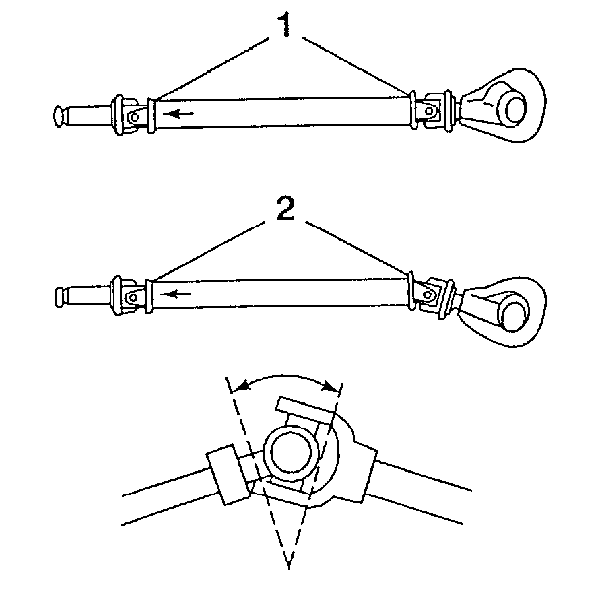
Driveline working angle
does not refer to the angle of any 1 shaft, but to the angle that is
formed by the intersection of 2 shafts.
The procedure for measuring and correcting driveline working angles
depends on whether the vehicle is equipped with a propeller shaft consisting
of 1 piece, 2 piece, or a 3 piece.
In order to verify the accuracy of the J 23498-20
,
inspect the angle of an accessible joint with the J 23498-A
prior to assigning the J 23498-20
on an inaccessible joint.
One-Piece Propeller Shaft System
Raise the vehicle on a suitable hoist or on safety stands. Ensure that
the rear axle is supported at curb height and that the wheels are free to
spin. Refer to
Lifting and Jacking the Vehicle
in General Information. Place the transmission in NEUTRAL.
Ensure that the vehicle has a full tank of fuel or the equivalent amount
of weight in the rear to simulate a full tank. The weight of 3.8 liters
of gasoline (1 gallon) is approximately 2.8 kg (6.2 lb).
Checking Phasing of U-Joint
Inspect the propeller shaft for correct phasing. Correct phasing means
that the front and the rear U-Joint are directly in line or parallel with
each other so that proper cancellation takes place.
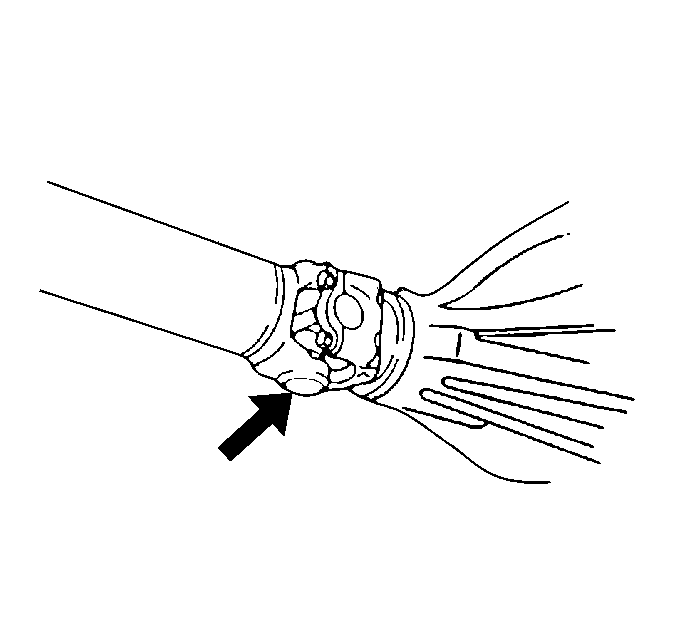
- Rotate the propeller shaft
so that the propeller shaft rear U-joint bearing cap is vertical.
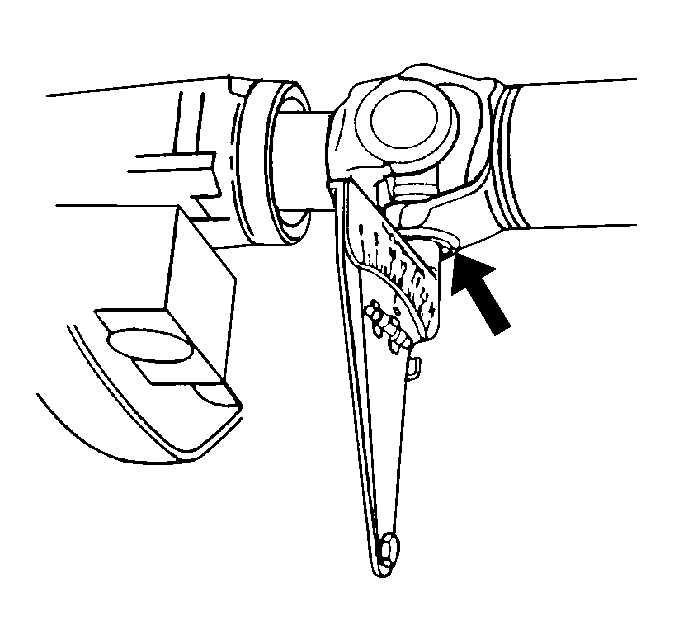
- Ensure that the front
bearing cap is also vertical.
- Place the J 23498-A
on
the propeller shaft rear U-joint bearing cap in order to ensure that both
U-joints are vertical.
- Set the indicator line above the sight glass on 15 (the horizontal
reference). Rotate the propeller shaft until the bubble centers in the sight
glass. This action brings the rear U-joint to vertical.
- Remove the J 23498-A
without disturbing the setting. Leave the setting on 15.
- Install the J 23498-A
on the front U-joint. The bubble should remain centered plus or minus 3 degrees
if the shaft is properly phased.
The out of phasing of the single-piece propeller shaft is very unusual.
If the shaft is visibly out of place, the end yokes are welded on in the wrong
position or the shaft is damaged due to twisting. In either case, replace
the propeller shaft before continuing with this procedure.
Measuring the Working Angles
The working angle of a U-joint is the difference between the angles
formed when 2 shafts intersect. One piece propeller shaft systems have
2 working angles, the front and the rear.
| • | The 2 working angles should be equal within 1/2 of a degree. |
| • | The working angles should not exceed 4 degrees. |
| • | The working angles should not be equal to 0 because a 0 working
angle will cause premature U-joint wear due to lack of rotation of the U-Joint. |
Canceled Out Driveline Angles








